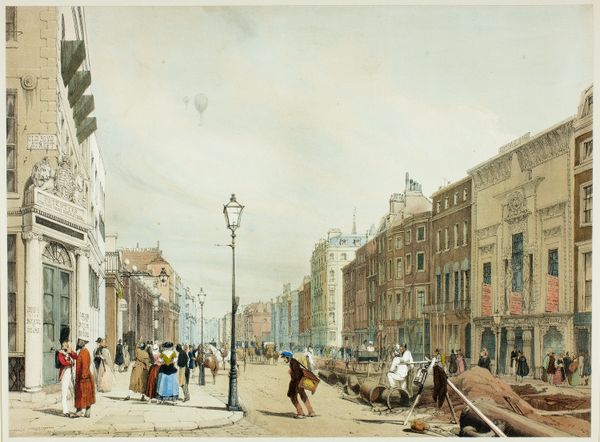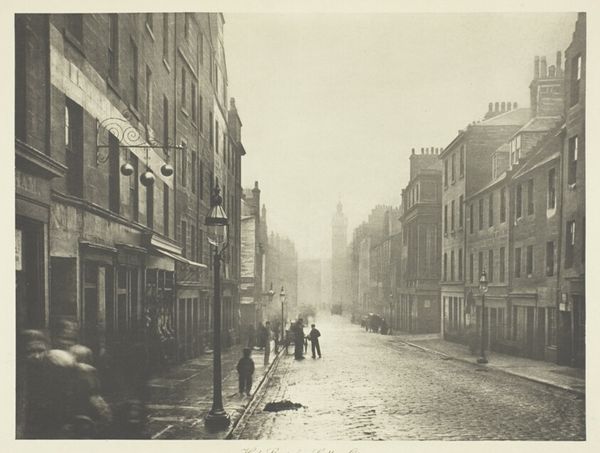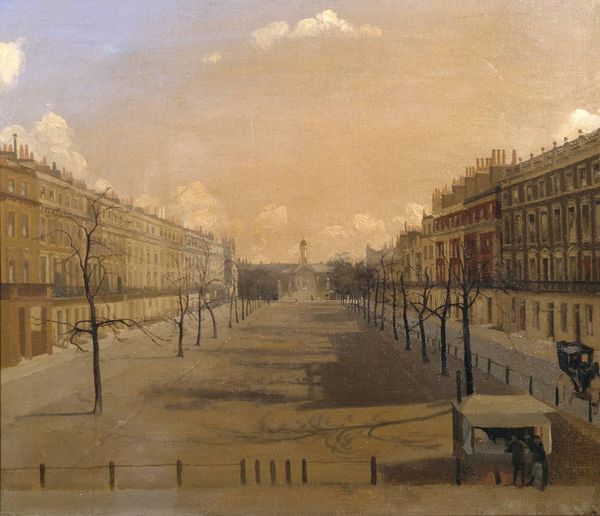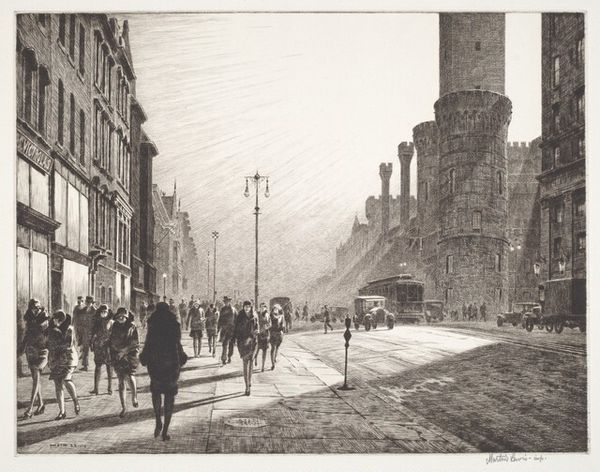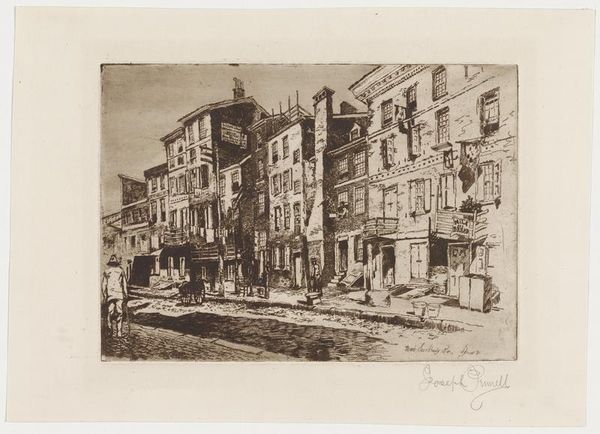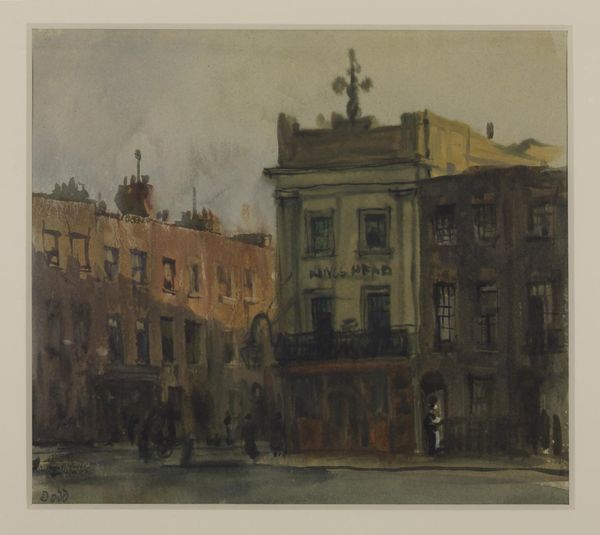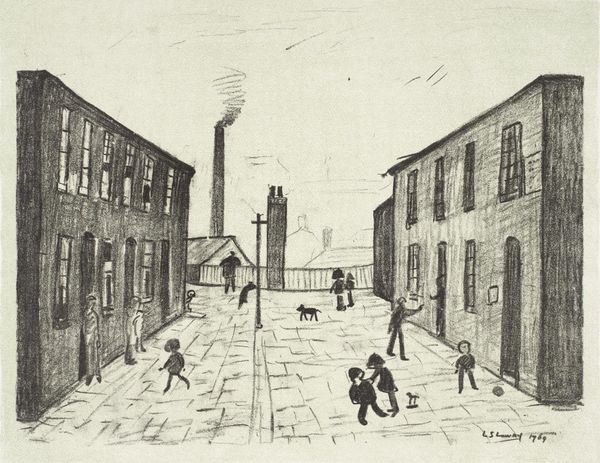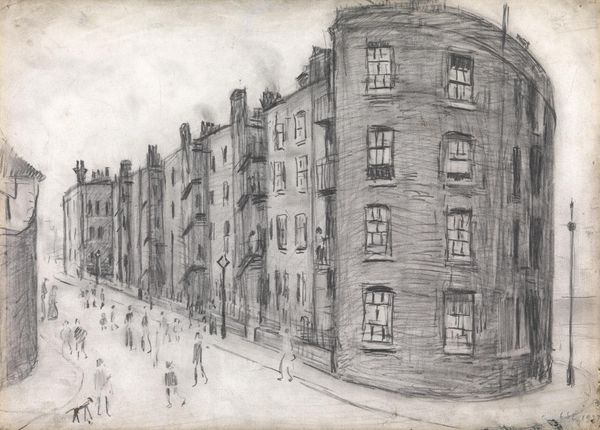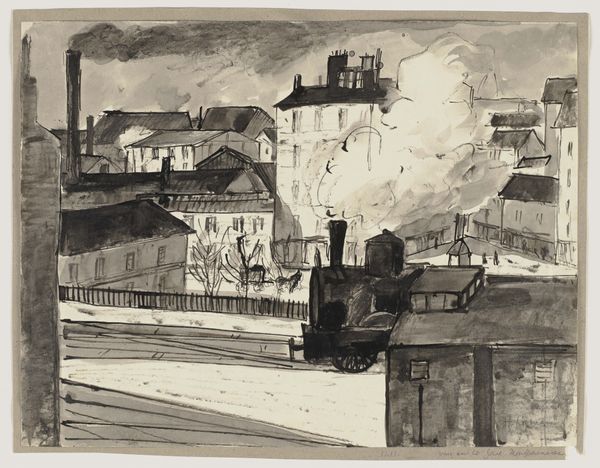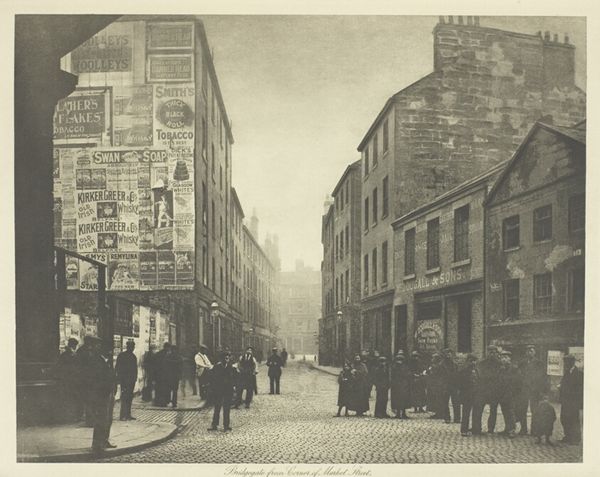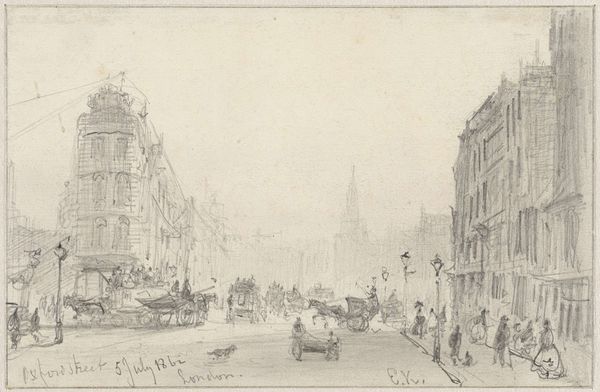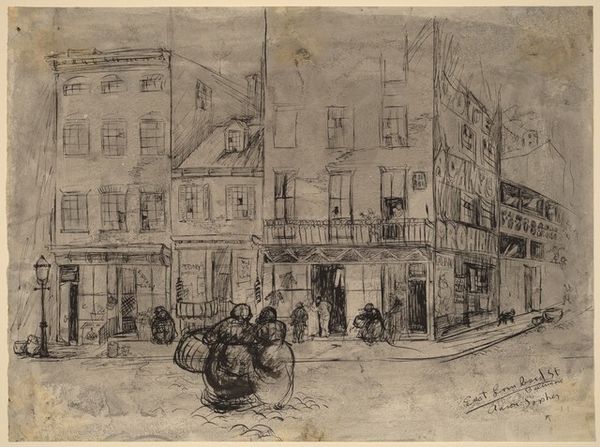
oil-paint
#
oil-paint
#
war
#
landscape
#
soviet-nonconformist-art
#
social-realism
#
oil painting
#
cityscape
#
history-painting
Copyright: Kukryniksy,Fair Use
Editor: This is *Berlin 1945*, an oil painting by the group Kukryniksy. It depicts a desolate cityscape after the war. There's an overwhelming feeling of loss and devastation that just hits you. What do you see in this piece, Professor? Curator: I see the brutal reality of war laid bare. The ruins, the figures moving like ghosts, they speak to a history of violence, but also to resilience. Consider the context: painted by Soviet artists, this work is not just about destruction. It subtly underscores the ideology of victory and the narrative of liberation pushed by the Soviet regime. How do you think the depiction of these figures relates to the surrounding landscape? Editor: I think they look small and insignificant compared to the scale of the destruction. Almost like they're overwhelmed. Is it about dehumanization? Curator: Perhaps, but I think there’s also a sense of quiet determination. Note the positioning of the buildings, the brushstrokes forming those skeletal structures. They remind us that even in total destruction, systems of power persist. The Soviets are there, now occupying this ruined city. What message does the artists’ choice of making a landscape of what remains of Berlin send to its Russian audience? Editor: I suppose, painting it like this emphasizes not just the destruction, but the triumph over that destruction… kind of writing a history in real-time? Curator: Exactly. This artwork, while seemingly a landscape of ruins, is also a landscape of political ideology. This piece is a reminder that the narrative of history is constantly being reshaped by those in power. I wonder, how can we ensure such narratives are critically examined, especially in contemporary times? Editor: This gives me a lot to think about, especially considering the art's cultural and political baggage and how it all ties together to give it even greater meaning.
Comments
No comments
Be the first to comment and join the conversation on the ultimate creative platform.

